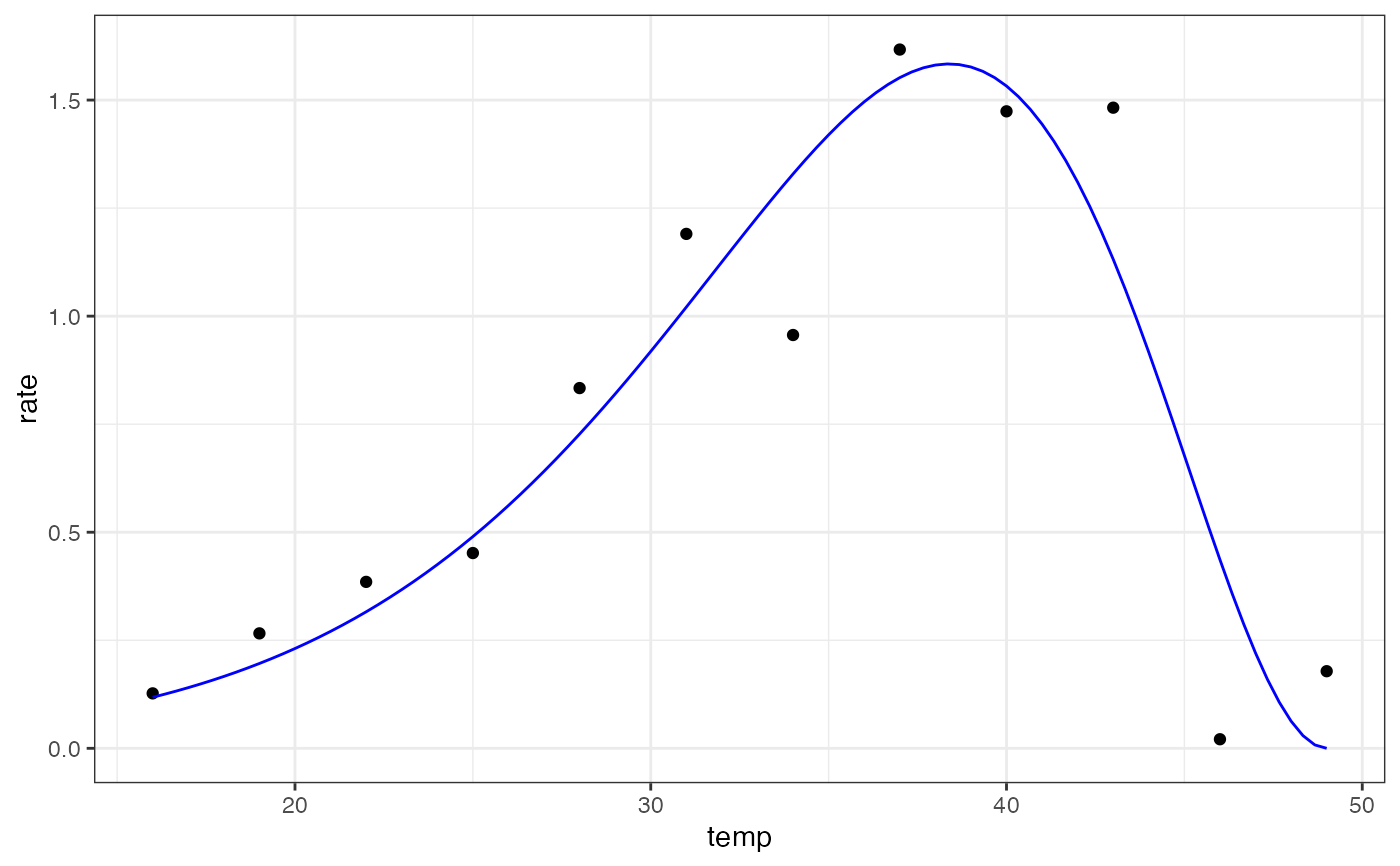Boatman model for fitting thermal performance curves
Value
a numeric vector of rate values based on the temperatures and parameter values provided to the function
Details
Equation: $$rate= r_{max} \cdot \left(sin\bigg(\pi\left(\frac{temp-t_{min}}{t_{max} - t_{min}}\right)^{a}\bigg)\right)^{b}$$
Start values in get_start_vals are derived from the data or sensible values from the literature.
Limits in get_lower_lims and get_upper_lims are derived from the data or based extreme values that are unlikely to occur in ecological settings.
References
Boatman, T. G., Lawson, T., & Geider, R. J. A key marine diazotroph in a changing ocean: The interacting effects of temperature, CO2 and light on the growth of Trichodesmium erythraeum IMS101. PLoS ONE, 12, e0168796 (2017)
Examples
# load in ggplot
library(ggplot2)
# subset for the first TPC curve
data('chlorella_tpc')
d <- subset(chlorella_tpc, curve_id == 1)
# get start values and fit model
start_vals <- get_start_vals(d$temp, d$rate, model_name = 'boatman_2017')
# fit model
mod <- nls.multstart::nls_multstart(rate~boatman_2017(temp = temp, rmax, tmin, tmax, a, b),
data = d,
iter = c(4,4,4,4,4),
start_lower = start_vals - 10,
start_upper = start_vals + 10,
lower = get_lower_lims(d$temp, d$rate, model_name = 'boatman_2017'),
upper = get_upper_lims(d$temp, d$rate, model_name = 'boatman_2017'),
supp_errors = 'Y',
convergence_count = FALSE)
# look at model fit
summary(mod)
#>
#> Formula: rate ~ boatman_2017(temp = temp, rmax, tmin, tmax, a, b)
#>
#> Parameters:
#> Estimate Std. Error t value Pr(>|t|)
#> rmax 1.5830 0.1968 8.043 8.81e-05 ***
#> tmin -50.0000 835.2422 -0.060 0.95394
#> tmax 49.0001 11.8441 4.137 0.00436 **
#> a 6.1124 48.7078 0.125 0.90366
#> b 1.9269 7.0552 0.273 0.79265
#> ---
#> Signif. codes: 0 ‘***’ 0.001 ‘**’ 0.01 ‘*’ 0.05 ‘.’ 0.1 ‘ ’ 1
#>
#> Residual standard error: 0.2739 on 7 degrees of freedom
#>
#> Number of iterations to convergence: 75
#> Achieved convergence tolerance: 1.49e-08
#>
# get predictions
preds <- data.frame(temp = seq(min(d$temp), max(d$temp), length.out = 100))
preds <- broom::augment(mod, newdata = preds)
# plot
ggplot(preds) +
geom_point(aes(temp, rate), d) +
geom_line(aes(temp, .fitted), col = 'blue') +
theme_bw()

